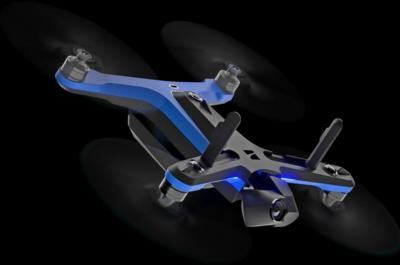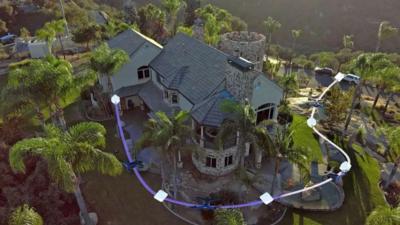Fri, Jan 07, 2022
Point-to-Point Flight Path Programming, Target Tracking, Turn Skydio Drones into An Automated Cameraman
Skydio started off the year with a few bonuses for fans, releasing an upgrade to their flagship drone alongside enhanced AI-backed software utilities for autonomous photography. The youthful company has seen a bumper crop of venture capital as it gears up to take on the biggest names in the drone sphere with its hands-off approach to pilotage. The Skydio 2+ brings slightly better specifications and capabilities that can incrementally boost its ability to work as a part of an enterprise.

The Skydio 2+ has continued its march onwards, now including some extending antennae for boosted reception and range, nearly doubled from before at 3.7 miles. The integrated 5GHz wi-fi should further extend the transmission quality, something that will come in handy while using the drone as a hands-free cameraman. The revised battery pack adds more flight time, now just 3 minutes short of 30. The base model 2+ comes in at $1,099, with the Pro Kit listed at a stout $2,169. While the drone market is often excited for newer, cooler hardware, Skydio's real news appears to be the release of their Keyframe software.

KeyFrame allows users to select a complex series of camera movements, somewhat reminiscent of old turn-based strategy games. Skydio claims the most popular AI skill they offer is the automated motion tracking that sees drones lock onto an object and follow from above, acting as an aerial camera. The release of KeyFrame allows for nearly anyone to replicate high angle tracking shots from above, smoothly following a subject while recording a single continuous scene, with pre-planned choreography. Users can select frames they would like to see in series and the Skydio drone flies the path while recording the panning shot. While such clips have been done by many with off-the-shelf drones for years, the automated process eliminates the requirement for skillful, smooth, manual operation that often results in multiple takes. When selecting the sequence of stations, users can choose the playback speed or location to custom-tailor the pace of the take, or if the occasion calls for it,
cancel the automation and assume manual control. The rollout also accompanies a service plan option for owners, which offers accidental damage repair or replacement of the drone for a flat rate.
More News
“This vote sends an undeniable message to Air Transat management: We are unified, resolute, and have earned a contract that reflects today’s industry standards, not the>[...]
Aero Linx: Beech Aero Club The Beech Aero Club (BAC) is the international type club for owners and pilots of the Beech Musketeer aircraft and its derivatives, the Sport, Super, Sun>[...]
While Landing In The River, The Extended Landing Gear Contacted The Water And The Airplane Nosed Over, Resulting In Substantial Damage Analysis: The pilot of the amphibious airplan>[...]
From 2022 (YouTube Edition): Carrying the Legacy of The B-29 For Generations to Come We had a chance to chat with the Executive Director of B-29 Doc, Josh Wells, during their stop >[...]
Also: Cosmonaut Kicked Out, Airbus Scales Back, AF Silver Star, Russian A-60 Clobbered A Samaritan’s Purse humanitarian flight was hijacked on Tuesday, December 2, while atte>[...]
 Aero-News: Quote of the Day (12.07.25)
Aero-News: Quote of the Day (12.07.25) ANN's Daily Aero-Linx (12.07.25)
ANN's Daily Aero-Linx (12.07.25) NTSB Final Report: Lafferty Jack Sea Rey
NTSB Final Report: Lafferty Jack Sea Rey Classic Aero-TV: The B29 SuperFortress Doc - History in Flight
Classic Aero-TV: The B29 SuperFortress Doc - History in Flight Airborne 12.08.25: Samaritans Purse Hijack, FAA Med Relief, China Rocket Fail
Airborne 12.08.25: Samaritans Purse Hijack, FAA Med Relief, China Rocket Fail




